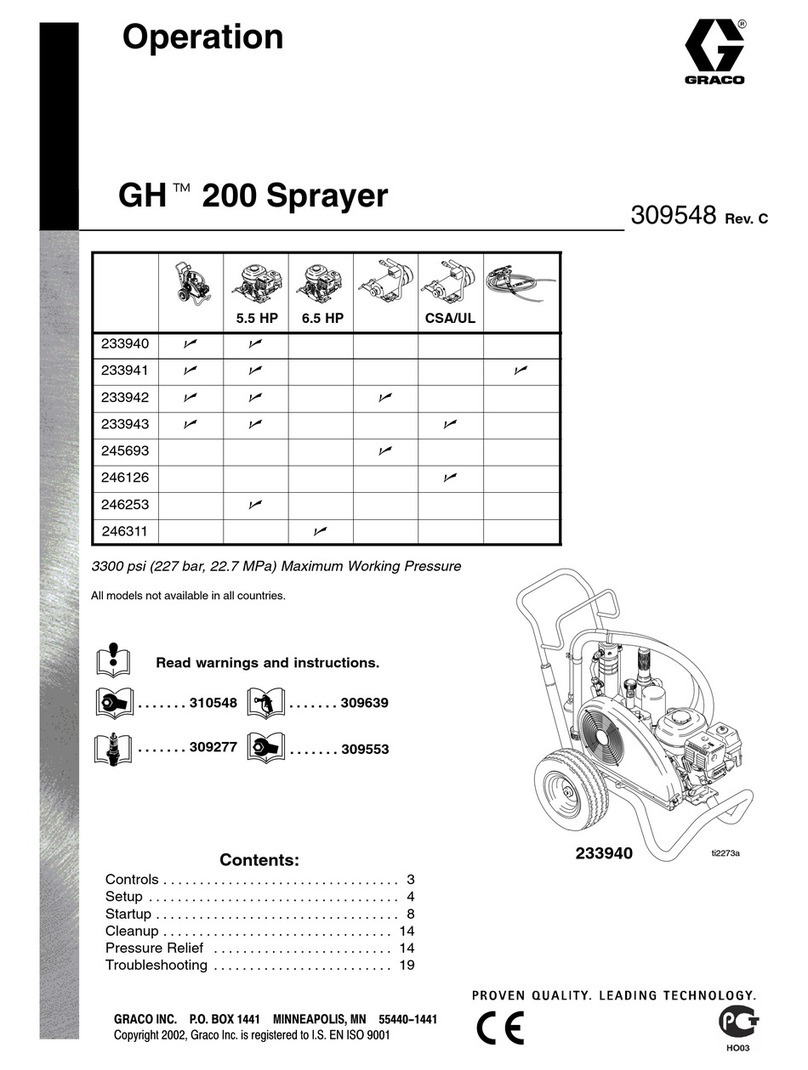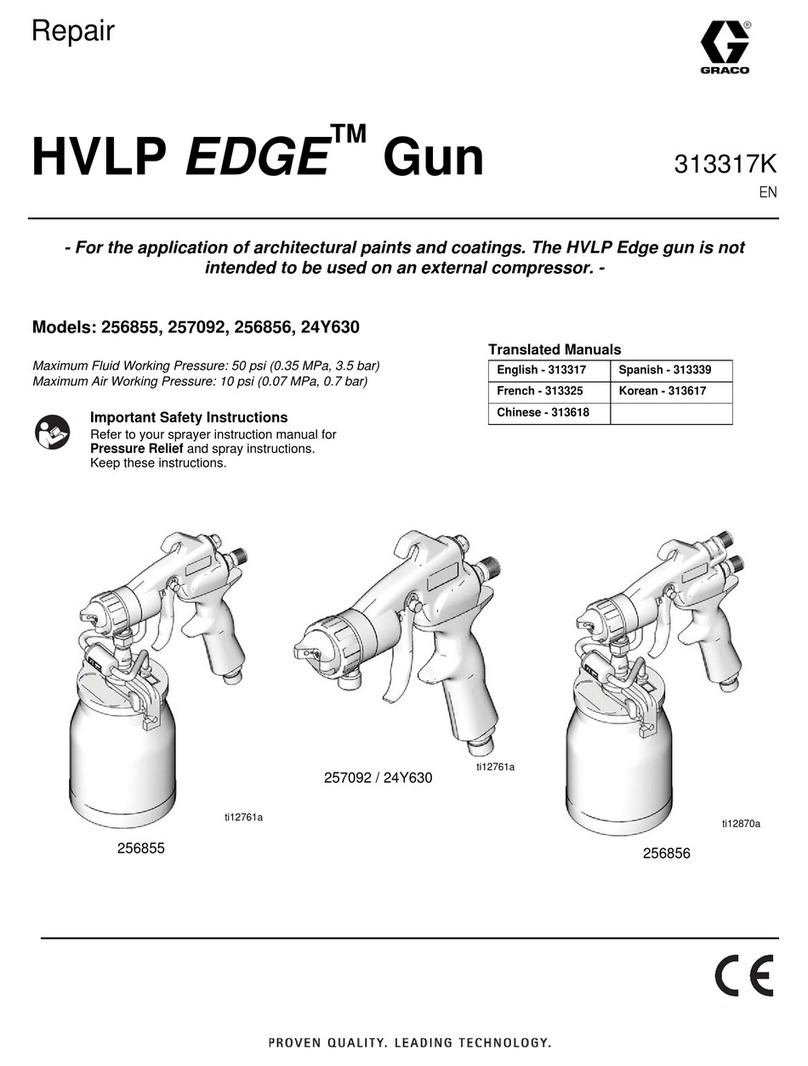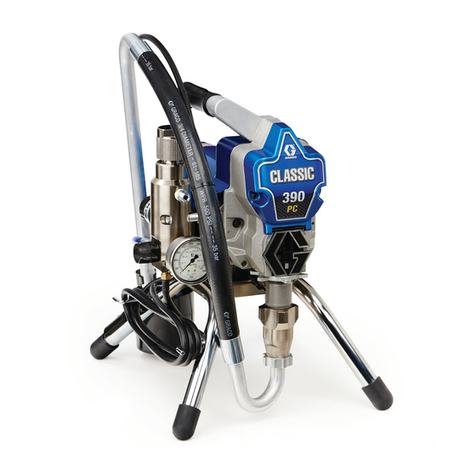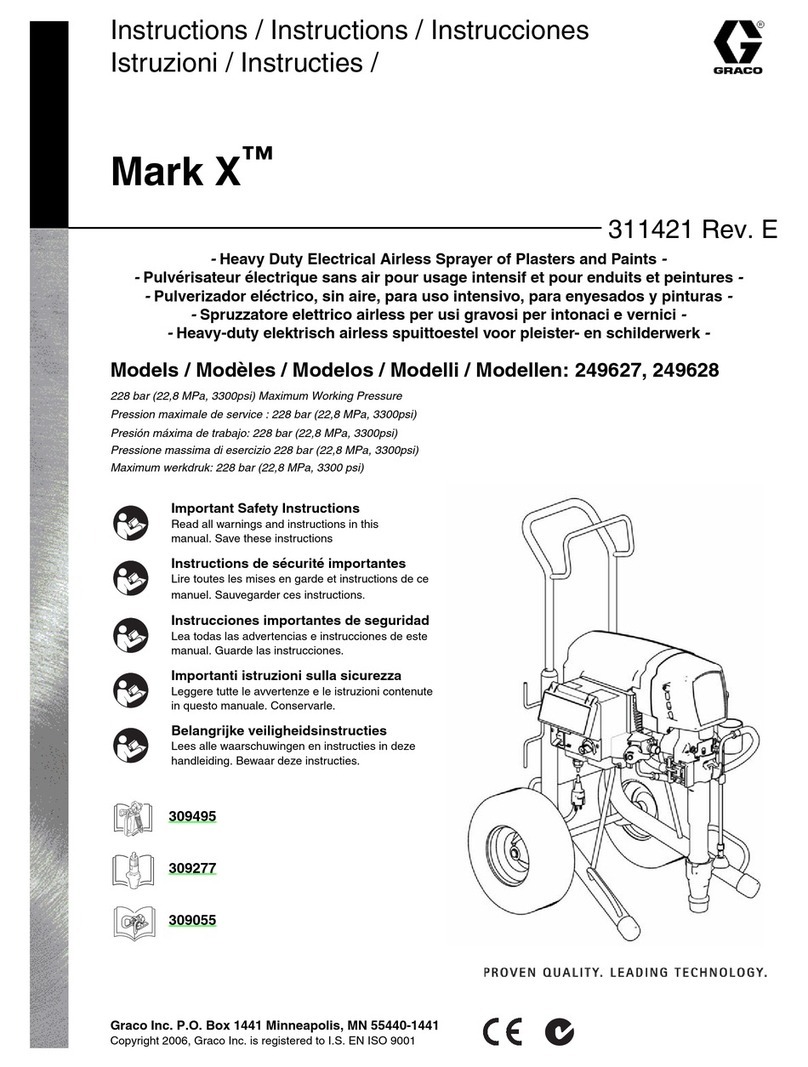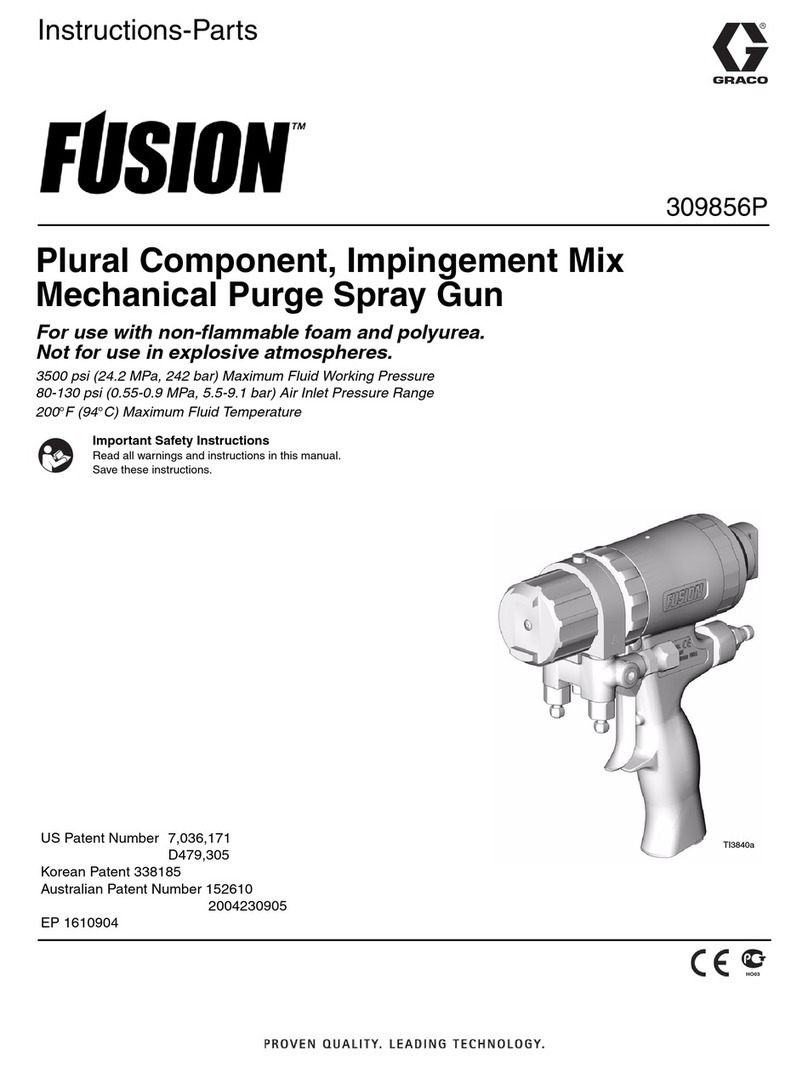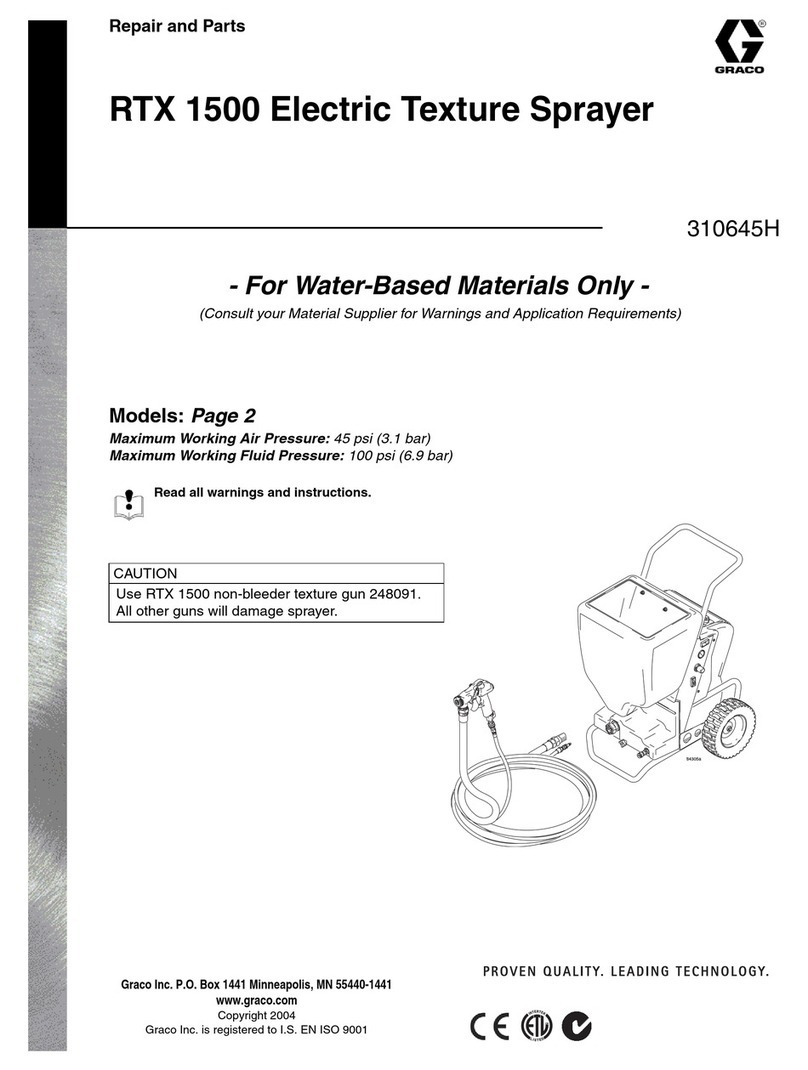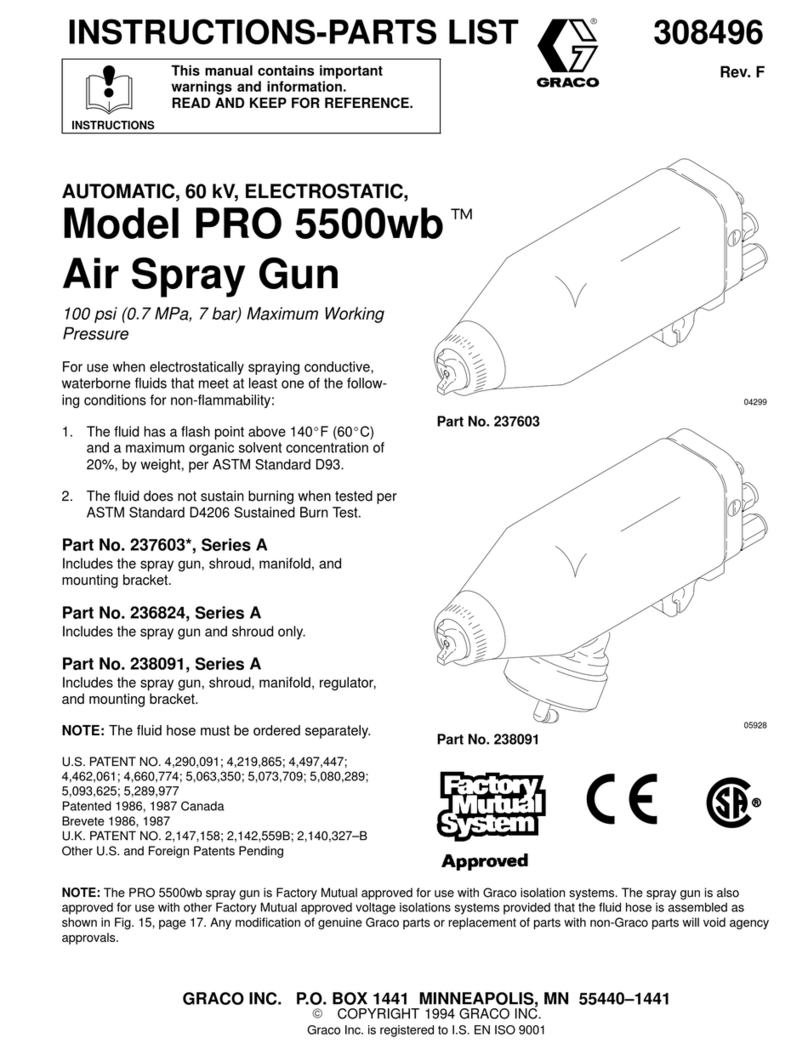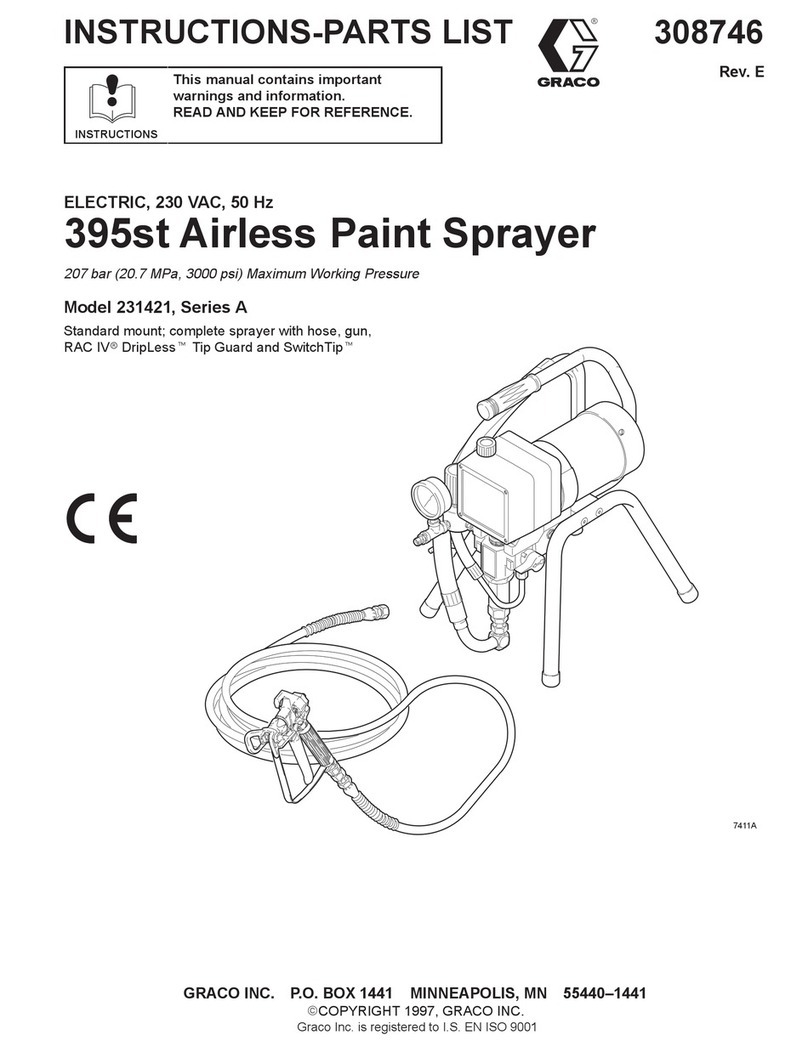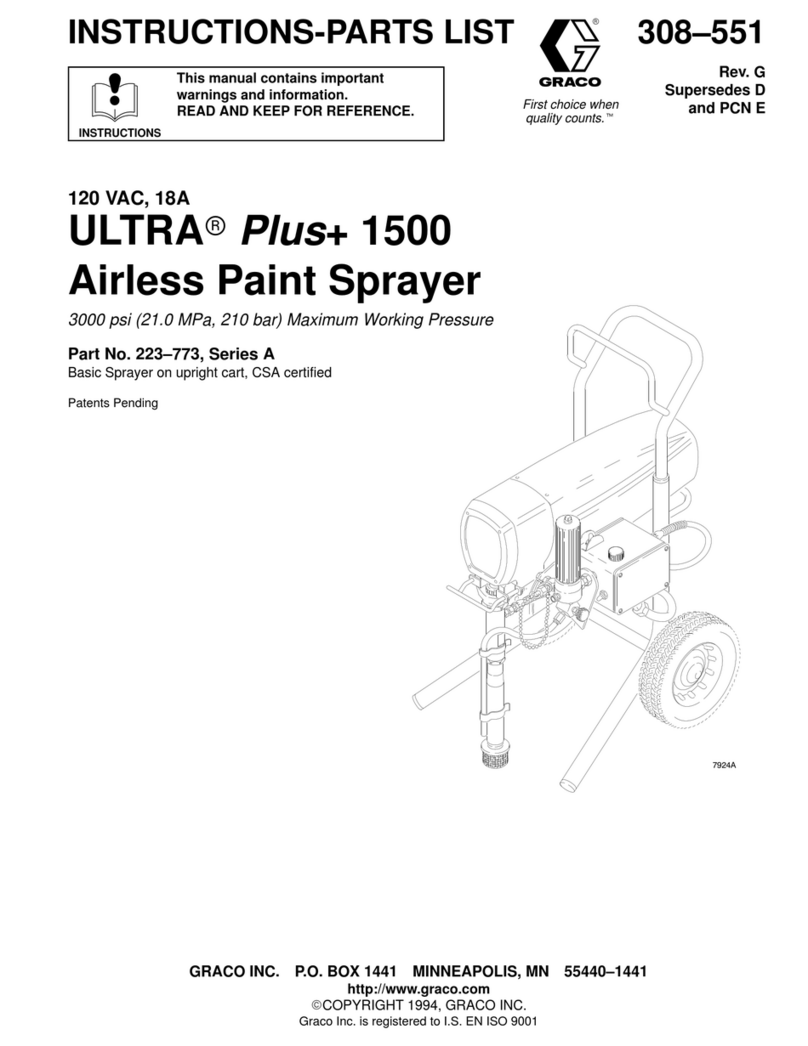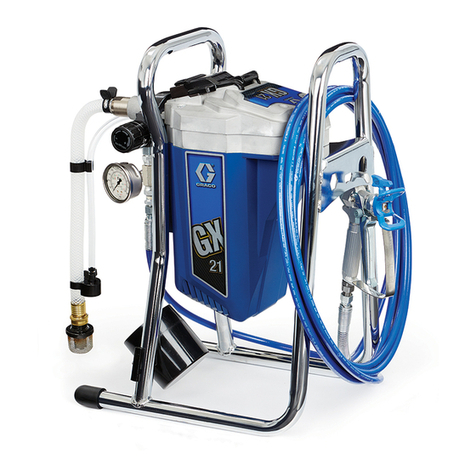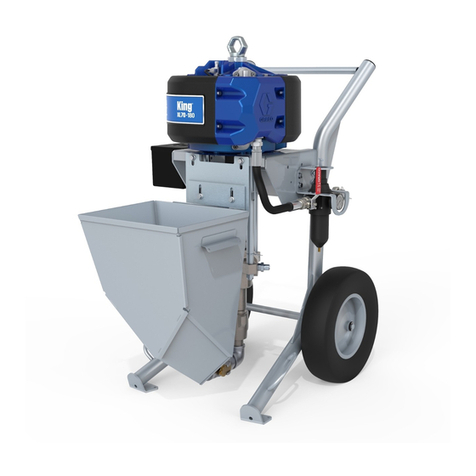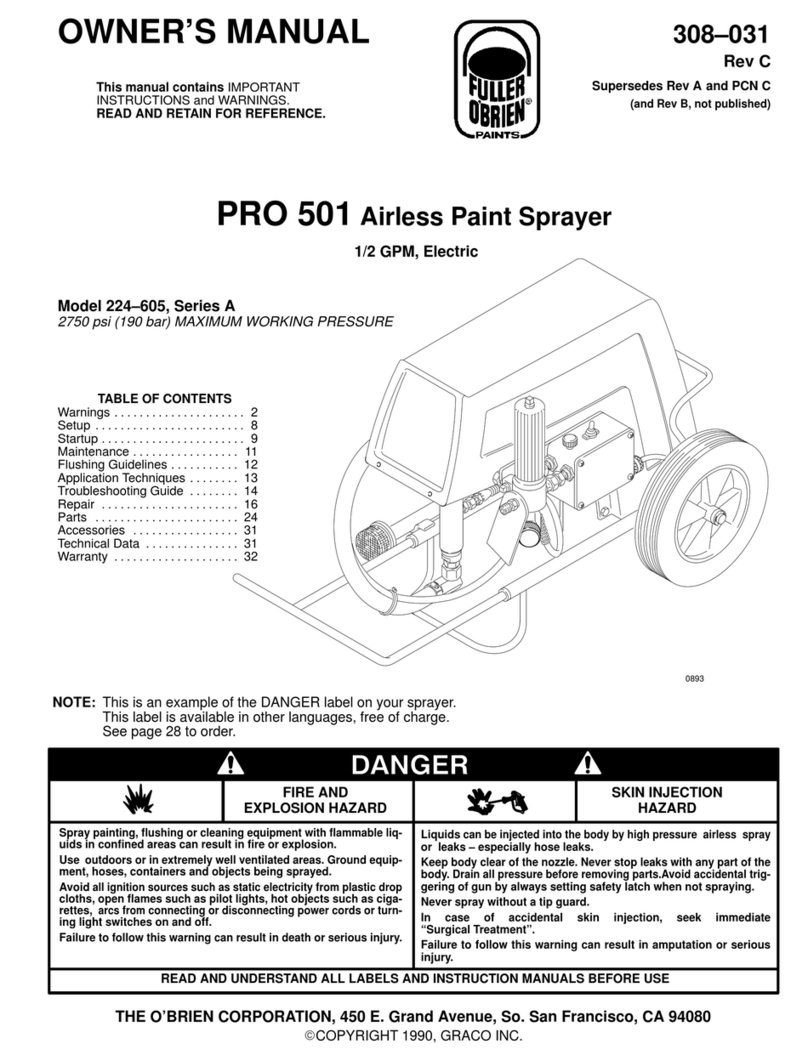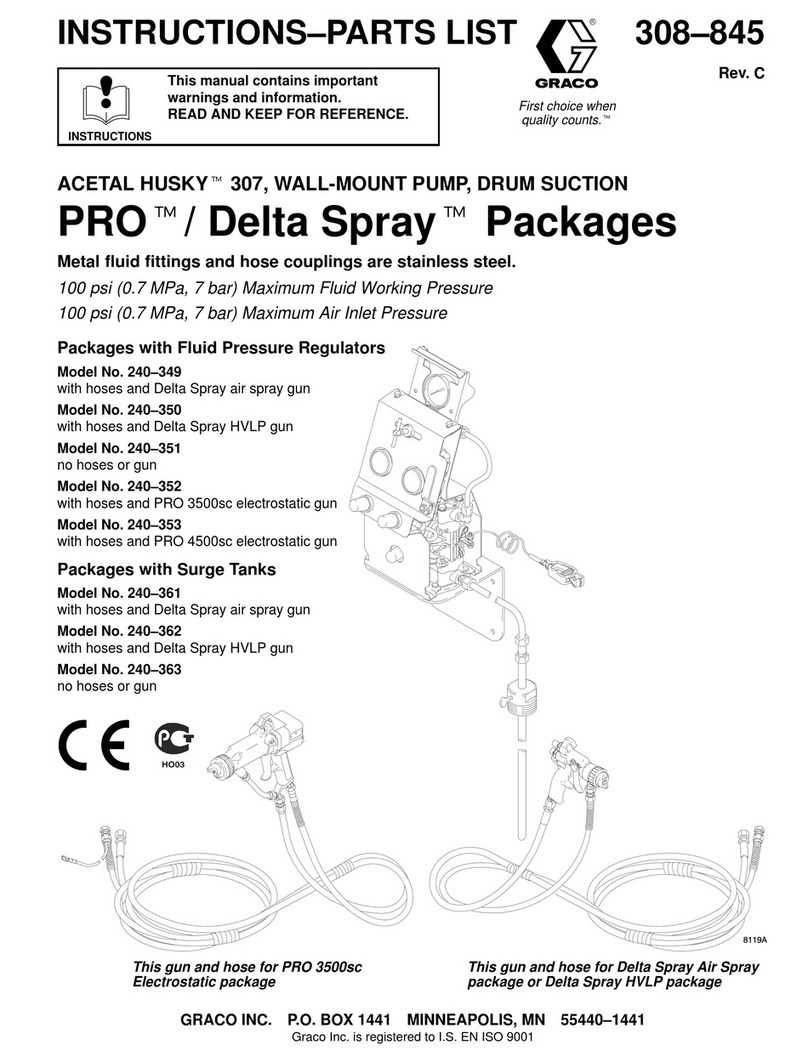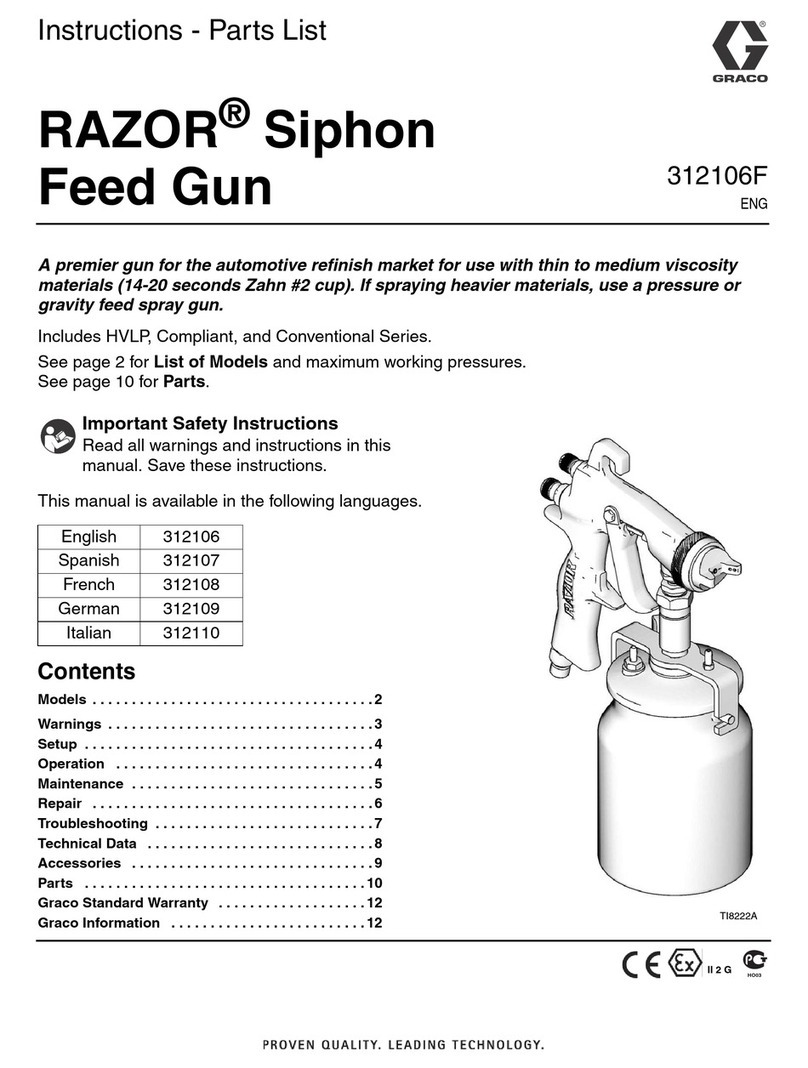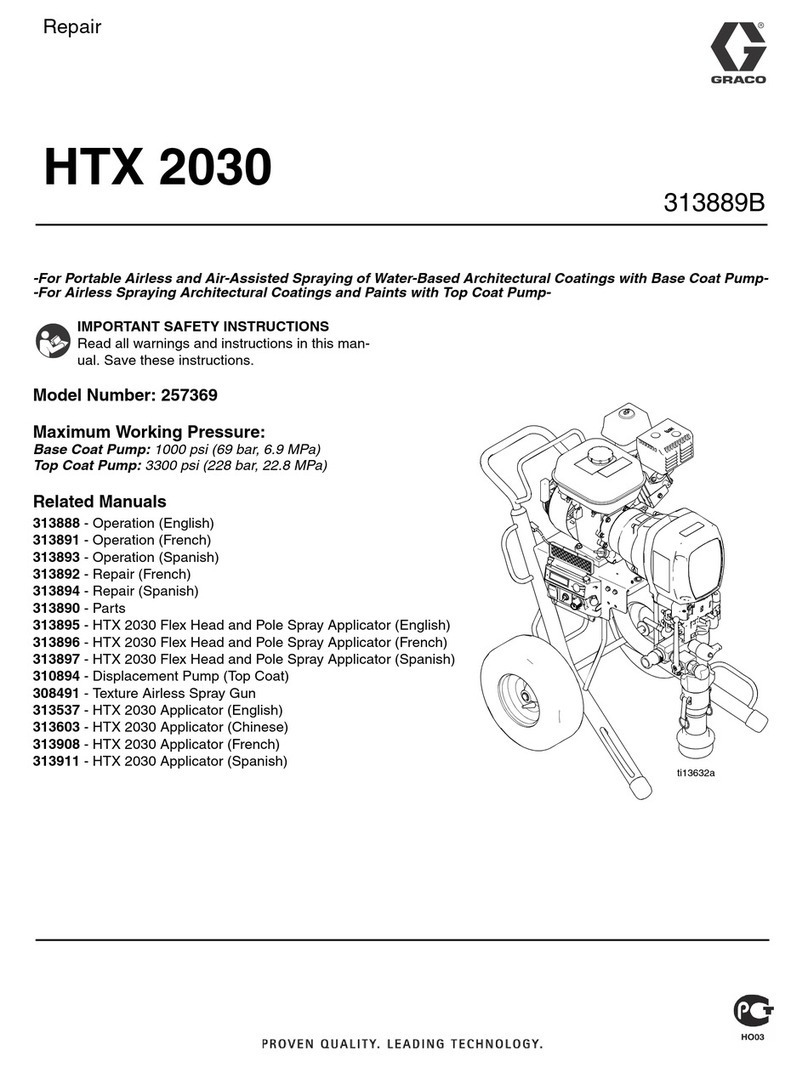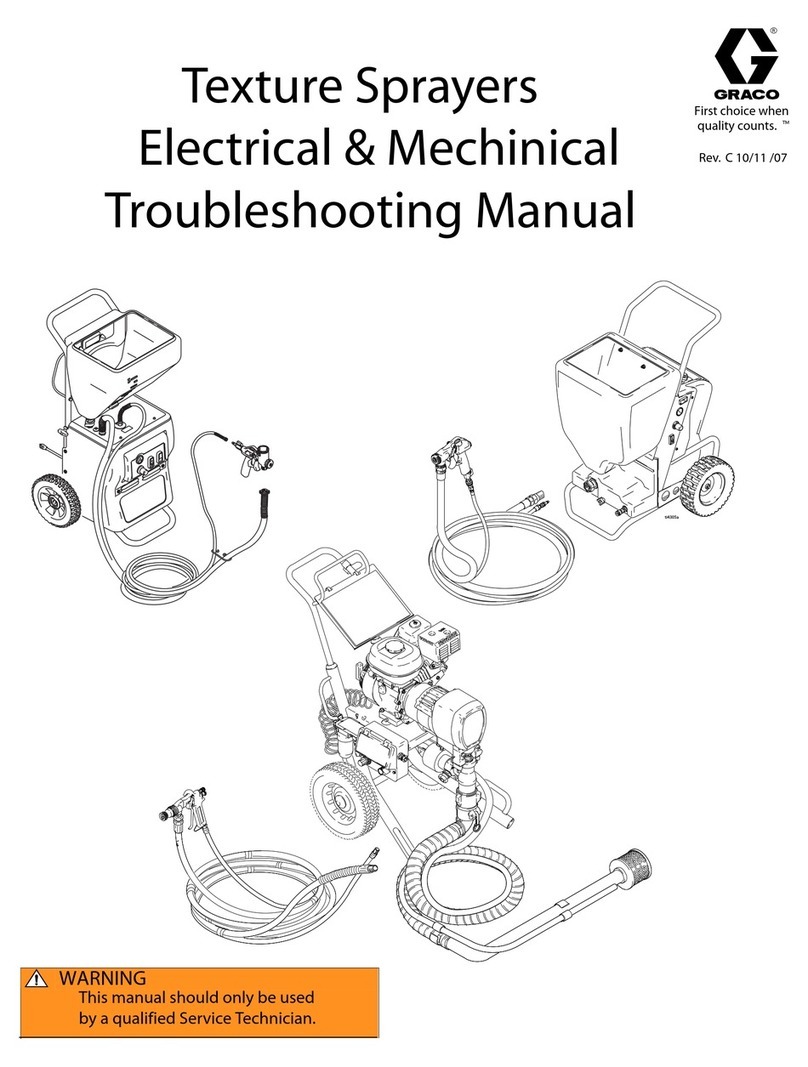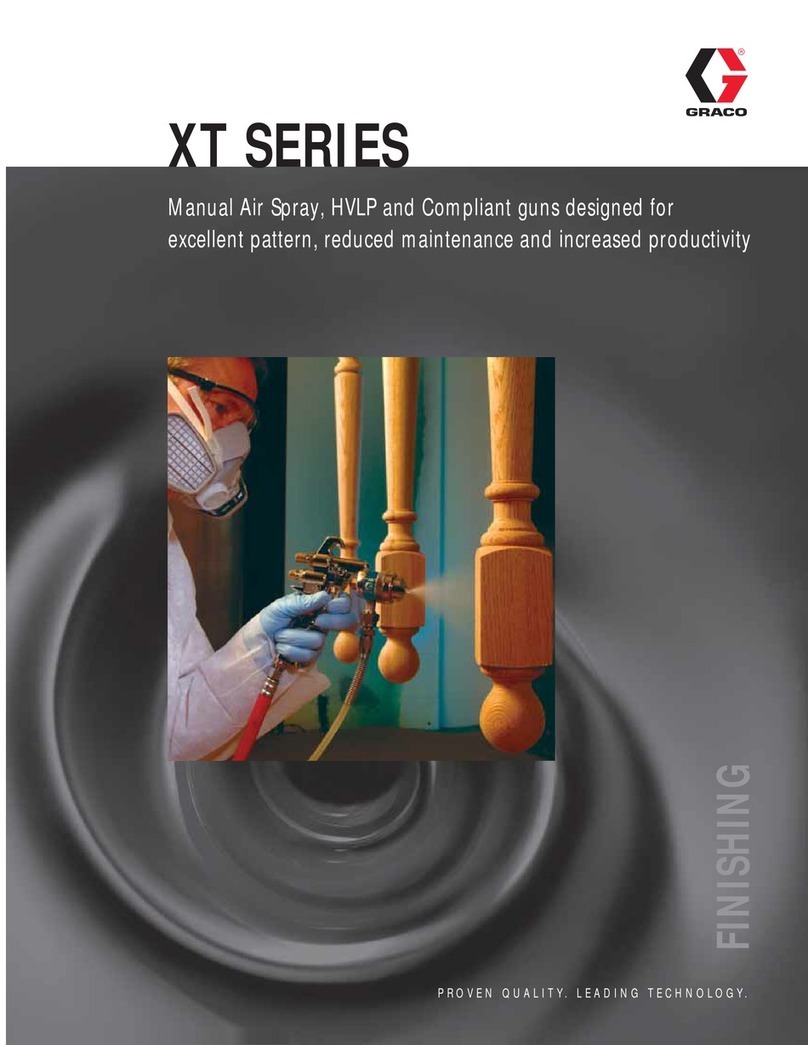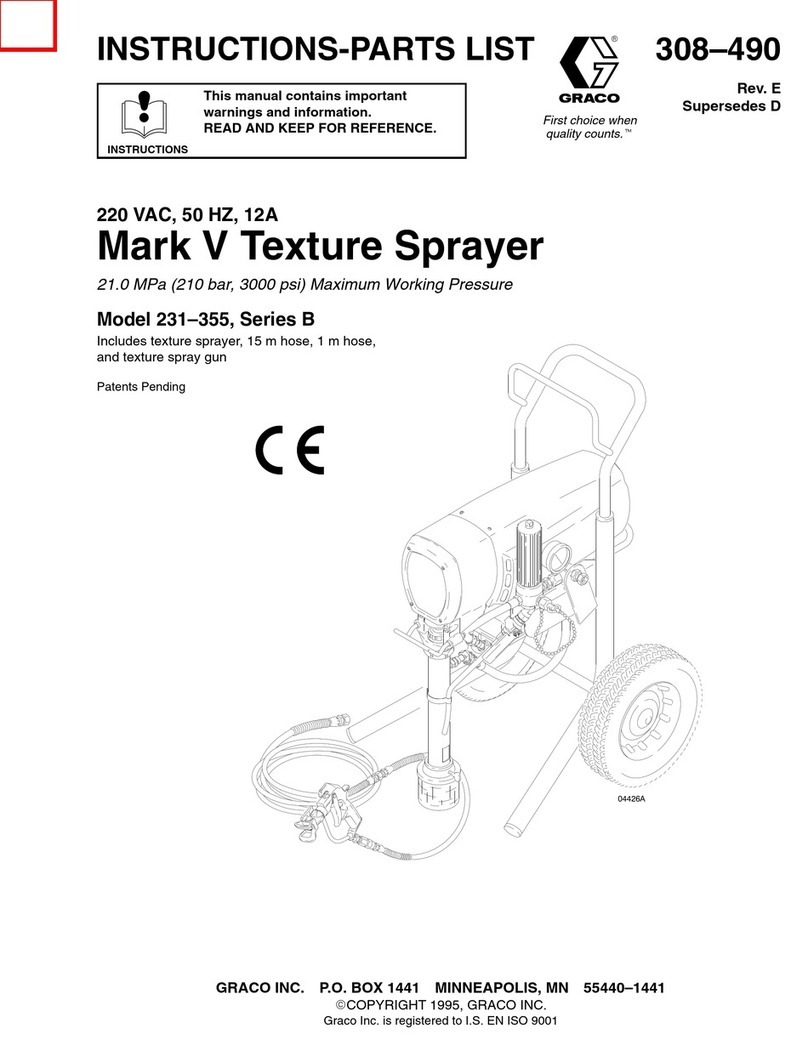
SAFETY
W
ARNINGS
HIGH PRESSURE SPRAY CAN CAUSE SERIOUS INJURY.
FOR PROFESSIONAL USE ONLY. OBSERVE ALL WARNINGS
Read and understand all instruction manuals before operating equipment.
FLUID INJECTION HAZARD
General
Safety
This
equipment generates very high fluid
pressure. Spray from the gun,
leaks
or ruptured components can inject fluid through your skin and into
your
body and cause extremely serious bodily injury
, including the need
for
amputation. Also, fluid injected or splashed into the
eyes or on the skin
can
cause serious damage.
NEVER point spray gun at anyone or at any part of the body
.
NEVER put hand or fingers over the spray tip.
NEVER try to “blow back” paint; this is NOT an air spray gun.
ALWAYS
follow the
Pressure Relief Procedure,
at right,
before
cleaning
or
removing the spray tip or servicing any system equipment.
NEVER try to stop or deflect leaks with your hand or body
.
CHECK operation of all equipment safety devices before each use.
Medical
Alert – Airless Spray W
ounds
If
any fluid appears
to penetrate your skin, get
EMERGENCY MEDICAL
CARE
A
T
ONCE. DO NOT TREA
T AS A SIMPLE CUT
.
T
ell the doctor
exactly
what fluid was injected.
Note
to Physician:
Injection into the skin
is a traumatic injury
.
It is im
-
portant
to treat the injury surgically as soon as possible.
Do
not
delay
treatment to research toxicity
. T
oxicity is a concern with some ex
-
otic
coatings injected directly into the blood stream. Consultation with a
plastic
surgeon or reconstructive hand surgeon may be advisable.
Spray
Gun Safety Devices
Be
sure all gun safety devices are operating properly before each use. Do
not
remove or modify any part of the gun; this can cause a
malfunction
and
result in serious bodily injury
.
Safety
Latch
Whenever you stop spraying, even for a moment, always set the gun
safety
latch in the closed or “safe”
position, making the gun inoperative.
Failure
to set the safety latch can result in
accidental triggering of the gun.
Diffuser
The
gun dif
fuser breaks up spray and reduces the risk of fluid
injection
when
the tip is not installed. Check dif
fuser operation
regularly
. Follow the
Pressure
Relief Procedure
, below
, then remove the spray tip. Aim the
gun
into a
grounded
metal pail, holding the gun firmly to the pail. Using the
lowest
possible pressure, trigger the gun. If the fluid emitted
is not
dif
-
fused into an irregular stream, replace the dif
fuser immediately
.
Spray T
ip Safety
Use
extreme caution when cleaning or changing spray tips. If the
spray
tip
clogs while spraying, engage the gun safety latch immediately
. AL
-
WAYS
follow the
Pressure Relief Procedure,
below
,
and then remove
the
spray tip to clean it.
NEVER
wipe of
f build–up around the spray tip or air cap until pressure is
fully
relieved and the gun safety latch is engaged.
Pressure
Relief Procedure
To
reduce the risk of serious bodily injury
, including fluid injection, splash
-
ing
in the eyes
or on skin, or injury from moving parts, always follow this
procedure
whenever pump is shut of
f, when checking or servicing any
part
of system,
when installing or changing spray tips and whenever you
stop
spraying.
1.
Engage the spray gun safety latch.
2.
Shut of
f the power to the pump.
3.
Close the bleed–type master air valve (required in system).
4.
Disengage the gun safety latch.
5.
Hold a metal part of the gun firmly to the side of a
grounded
metal
waste container and trigger the gun to relieve fluid pressure.
6.
Engage the gun safety latch again.
7. Open
the drain
valve connected to the fluid pressure gauge to help
relieve
fluid pressure in the pump, hose and
gun. T
riggering the gun to
relieve pressure may not be suf ficient. Have a container ready to
catch
the drainage.
8.
Leave the drain valve open until you are ready to spray again.
If you suspect that the spray tip or hose is completely clogged or that
pressure has not been fully relieved after following the steps above,
VERY SLOWLY loosen the hose end coupling and relieve pressure
gradually,
then loosen completely
. Now clear the tip or hose obstruction.
EQUIPMENT MISUSE HAZARD
General
Safety
Any
misuse of the equipment or accessories,
such as overpressurizing,
modifying
parts, using incompatible chemicals and fluids, or using worn
or
damaged parts, can cause them to rupture and result in serious bodily
injury,
including
fluid injection and splashing fluid in the eyes or on the
skin, or in fire, explosion or property damage.
NEVER
alter or modify any part of this equipment; doing so
could cause it
to
malfunction.
CHECK
the gun and all spray equipment regularly and repair or replace
worn
or damaged parts immediately
.
Read
and follow the fluid and solvent manufacturer
’
s literature regarding
the use of protective eyewear , gloves, clothing, respirator and other
equipment.
System
Pressure
The 10:1 Ratio Monark pump develops 950 psi (66 bar) MAXIMUM
FLUID
WORKING PRESSURE at 95 psi (6.5 bar) MAXIMUM
WORK
-
ING
AIR PRESSURE. The AA2000 Spray Gun has a 950 psi (66
bar)
MAXIMUM
FLUID WORKING PRESSURE. NEVER exceed 95 psi
(6.5)
air
pressure to the pump or spray gun.
T
o guarantee compliance to
Cali-
fornia
Wood
Rule 1
136
, the supply air
to the gun must be regulated down
to
10 psi (0.7 bar) MAXIMUM OPERA
TING PRESSURE, using Air Regu
-
lator Part
No.
1
10–776. Be sure that all spray equipment and accessories
added
to the sprayer are properly rated to withstand the maximum work
-
ing
pressure of the sprayer
.
DO NOT exceed the maximum working pres
-
sure
of any component or accessory used with the sprayer
.
Fluid
Compatibility
BE
SURE all fluids and solvents used
are chemically compatible with the
“Wetted
Parts” shown in the
TECHNICAL DA
TA
on page 17.
Always
read
the fluid and solvent manufacturer
’
s literature before using them in
this
sprayer
.
